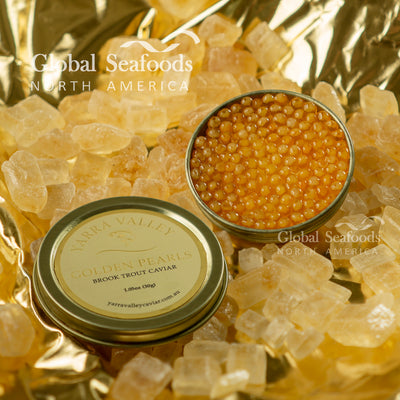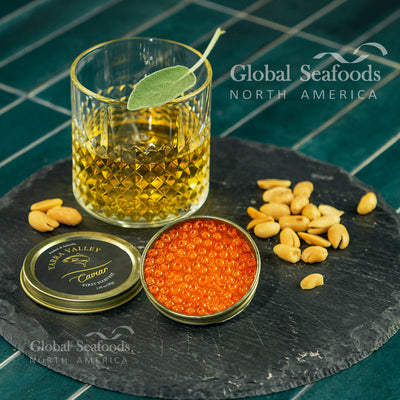How to Make Delicious Ikura Hand Rolls: A Step-by-Step Guide

Ikura Hand Rolls: Recipe
Ikura hand rolls, a beloved staple in Japanese cuisine, offer an irresistible combination of flavors and textures that delight the senses. These sushi hand rolls, filled with savory salmon roe (Ikura), crunchy nori seaweed, and perfectly seasoned rice, make for a perfect snack or appetizer that can elevate any dining experience. In this guide, we’ll dive deep into how to make your own Ikura hand rolls at home, from selecting the best ingredients to mastering the rolling technique. With this step-by-step guide, you’ll impress your guests or enjoy a luxurious treat yourself.
Why Ikura Hand Rolls?
Ikura (salmon roe) is a prized ingredient in Japanese cuisine, offering a burst of umami and richness that enhances any dish it accompanies. Hand rolls, or temaki, are a convenient and fun way to enjoy sushi without the need for expert knife skills. With just a few key ingredients, you can create restaurant-quality hand rolls in the comfort of your own kitchen.
Selecting the Best Ingredients for Ikura Hand Rolls
The quality of your ingredients is crucial for achieving the best taste and texture in your hand rolls. Here's a detailed guide on sourcing and preparing the essential components.
Choosing the Right Ikura (Salmon Roe)
Ikura is the star of the show, so selecting high-quality roe is critical. The best Ikura has a vibrant orange-red color, firm texture, and a briny, clean flavor. Global Seafoods offers a premium selection of red caviar, including Chum Salmon Caviar, Coho Salmon Caviar, and Trout Red Caviar, all of which make excellent choices for Ikura hand rolls.
Pro Tip:
Freshness matters! Always check the packaging for freshness dates and store your Ikura properly in the refrigerator or freezer.
Nori (Seaweed) – The Crunchy Wrapper
Nori, the seaweed used to wrap hand rolls, provides a crisp texture and a subtle umami flavor. Look for high-quality nori sheets that are thick and dark green in color, as these will offer the best flavor and durability for rolling. You can find premium nori at specialty grocery stores or online.
Perfectly Seasoned Sushi Rice
The rice used in hand rolls is critical for both flavor and texture. Use short-grain Japanese sushi rice for the best results. The rice should be seasoned with a mixture of rice vinegar, sugar, and salt to create the perfect balance of sweet, tangy, and salty.
Here’s how to prepare the rice:
- Rinse the rice thoroughly until the water runs clear.
- Cook the rice with a 1:1.25 ratio of rice to water.
- Once cooked, gently fold in rice vinegar, sugar, and salt while the rice is still warm.
Pro Tip:
Spread the rice thinly on a wide plate to cool it down quickly, and use a fan to give the rice a shiny, polished look.
Optional Fillings and Toppings
While Ikura is the main ingredient, adding complementary flavors can enhance the overall experience. Consider these additional fillings:
- Avocado: Creamy texture to balance the briny Ikura.
- Cucumber: Adds crunch and freshness.
- Shiso Leaf: A unique herb with a slightly minty flavor.
- Wasabi: A spicy kick that elevates the taste.
Step-by-Step Guide to Assembling Ikura Hand Rolls
Now that you have all your ingredients ready, it’s time to assemble your Ikura hand rolls. Follow these steps for perfect results every time.
Step 1 – Prepare Your Workspace
Before you start, ensure that your workspace is clean and organized. Lay out all your ingredients in front of you, including your sushi rice, nori sheets, and Ikura. Keep a small bowl of water nearby to wet your hands while working with the rice.
Step 2 – Cut the Nori Sheets
Nori sheets are typically large, so for hand rolls, you’ll want to cut them in half. Using sharp kitchen scissors, carefully slice the nori into two equal-sized pieces. This will make the rolling process easier and create the perfect hand roll size.
Step 3 – Add the Rice
Take a nori sheet and place it shiny-side down on your palm. Wet your hands to prevent the rice from sticking, then spread a thin layer of sushi rice across one-third of the nori. Be careful not to add too much rice, as it can overwhelm the delicate flavors of the Ikura.
Step 4 – Place the Ikura and Fillings
Spoon a generous amount of Ikura onto the rice. If you're adding extra fillings, such as avocado or cucumber, place them alongside the Ikura. The key is to not overstuff the roll, as this can make it difficult to wrap.
Step 5 – Roll and Shape
Starting from the bottom left corner, fold the nori over the rice and fillings, creating a cone shape. Continue rolling until you have a tight, compact hand roll. Press the seam gently to seal it, and your Ikura hand roll is complete!
Tips for Serving and Enjoying Ikura Hand Rolls
Ikura hand rolls are best enjoyed immediately after assembling. The contrast between the warm, fluffy rice, crunchy nori, and salty, savory Ikura is unbeatable when fresh. Serve with a side of soy sauce and wasabi for dipping, and consider pairing with a light, chilled sake or Japanese beer.
Pro Tip:
Don’t let the nori sit too long after making the rolls. It will start to absorb moisture from the rice, losing its crispiness.
Why High-Quality Ikura Matters for the Perfect Hand Roll
When making Ikura hand rolls, the quality of your ingredients directly impacts the final product. The better your Ikura, the more flavorful and luxurious your hand rolls will be. Using premium-grade salmon roe from trusted sources like Global Seafoods ensures you’re getting the best product available.
As renowned chef Nobu Matsuhisa once said, “When you use the finest ingredients, you don't need to do much to create something exquisite.” His philosophy applies perfectly to Ikura hand rolls—let the quality of the roe shine through in every bite.
Where to Buy Premium Ikura and Red Caviar
If you’re looking to recreate this recipe with top-tier ingredients, look no further than Global Seafoods. Their selection includes a variety of high-quality caviar options, such as:
For those looking to elevate their sushi with unique varieties, try Bloody Shiraz Infused Caviar or Golden Pearls Brook Trout Caviar.
Frequently Asked Questions About Ikura Hand Rolls
What is the best type of salmon roe for hand rolls?
The best salmon roe for hand rolls is typically Chum or Coho salmon roe, known for their large, firm eggs and vibrant flavor. Both are available from Global Seafoods.
Can I make Ikura hand rolls in advance?
It’s best to assemble Ikura hand rolls just before serving, as the nori can become soggy if it sits too long.
What are some alternatives to Ikura for sushi rolls?
If you’re looking for alternatives, consider trout roe or tobiko (flying fish roe). For a non-fish option, try avocado or cucumber.
How do I store leftover Ikura?
Store any leftover Ikura in an airtight container in the refrigerator. Use within 2-3 days for the best taste.
Can I freeze Ikura?
Yes, you can freeze Ikura. Be sure to store it in an airtight container, and when ready to use, thaw it slowly in the refrigerator.
What should I serve with Ikura hand rolls?
Ikura hand rolls pair wonderfully with miso soup, edamame, and a light Japanese salad.
Also in Recipes

Caviar on Toast – A Luxurious and Elegant Appetizer
Caviar on toast is the perfect blend of rich flavors, delicate textures, and gourmet sophistication. Whether you're preparing a special dinner party appetizer or treating yourself to an exquisite snack, this simple yet elegant recipe will elevate your dining experience. Learn how to create the perfect caviar toast with crème fraîche, lemon, and fresh herbs for a luxurious bite that impresses every time!

🔥 Black Caviar Recipes – Luxurious Ways to Enjoy This Delicacy
Explore luxurious black caviar recipes including blinis, deviled eggs, pasta, and more. Learn how to enjoy caviar like a gourmet chef.

🔥 How to Make Red Caviar Blinis – A Luxurious & Easy Appetizer
Learn how to make perfect red caviar blinis, a classic Russian appetizer featuring fluffy pancakes, crème fraîche, and luxurious red caviar.










